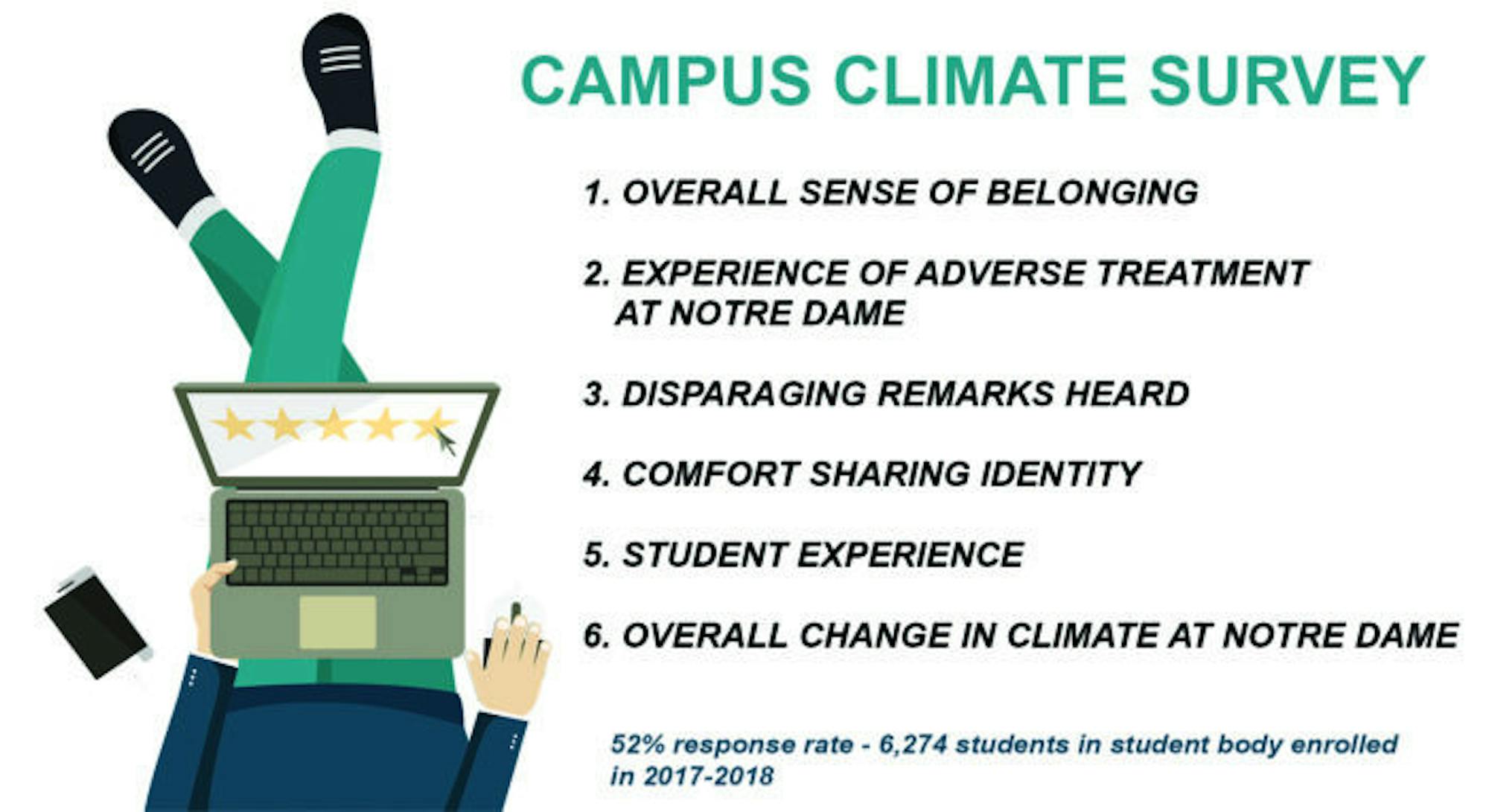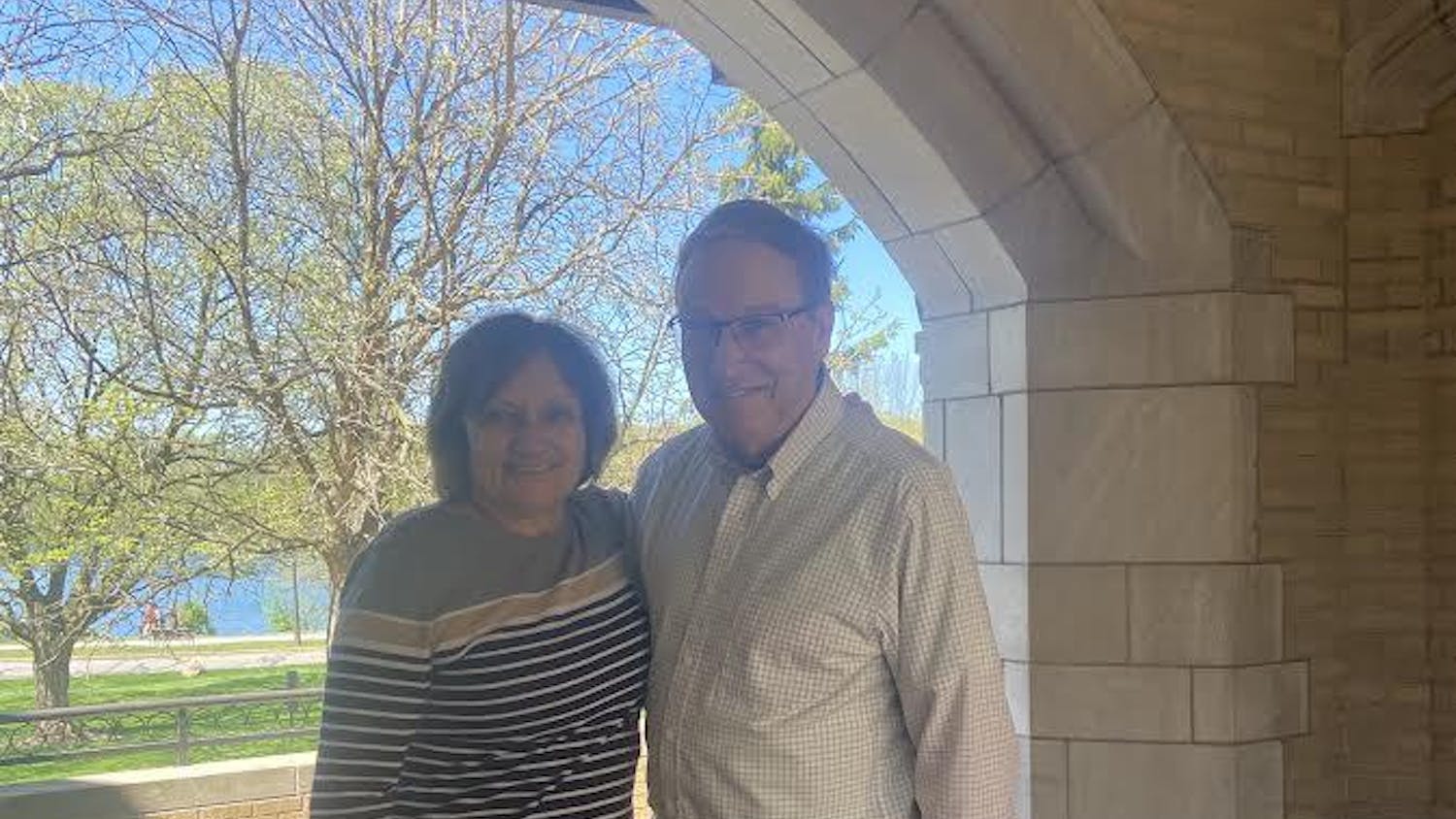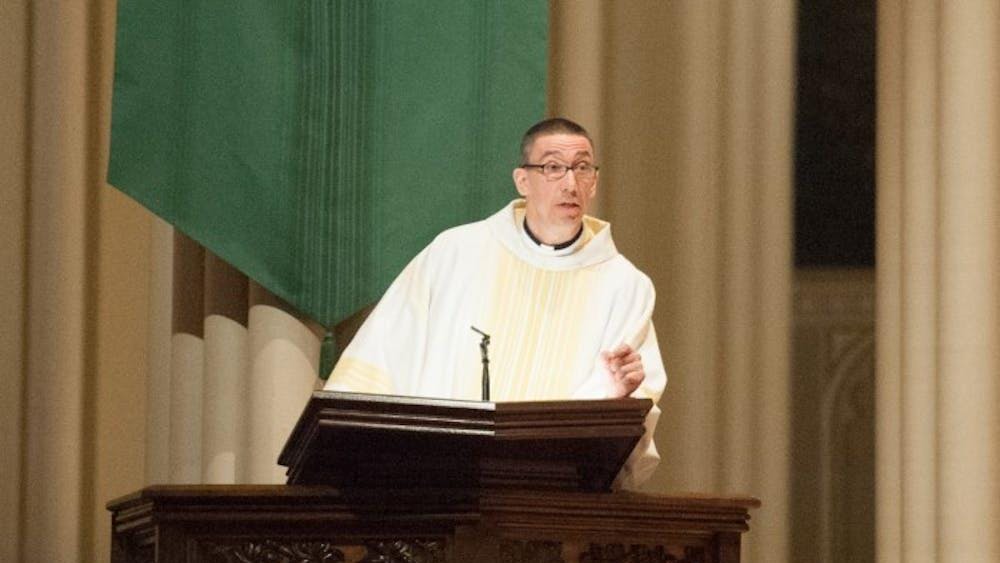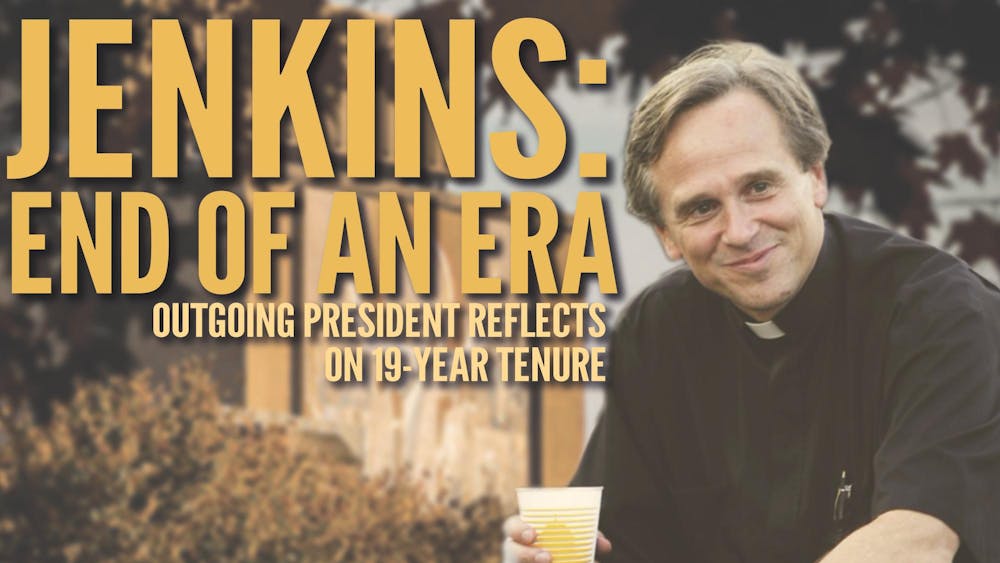The University’s Inclusive Campus Student Survey results were released Monday. The survey revealed student attitudes on the overall climate and experience at Notre Dame, in terms of diversity and inclusion.
The survey was administered by the Office of Strategic Planning and Institutional Research Feb. 6-21 to measure the campus community on a number of categories, including sense of belonging, experiences with adverse treatment and changes in climate over time. With an overall response rate of 52 percent of the student body enrolled for the 2017-2018 school year — 6,274 students — offered its perspective.
Erin Hoffmann Harding, vice president for student affairs who helped oversee the survey, said the survey is the first of its kind and is intended to act as a baseline for future campus community conversations regarding diversity and inclusion at Notre Dame.
“Part of the reason we’re sharing this information so transparently is actually to engage our students in further conversation about what experiences or barriers might exist,” she said. “But most importantly, how the University can be a better and a more inclusive place.”
The first category measures a number of student impressions regarding the overall sense of belonging at Notre Dame. About 80 percent of students strongly or somewhat agreed they felt valued or part of the campus community in each question.
While “100 percent satisfaction” is the University’s goal, Hoffmann Harding said it would be an unrealistic expectation.
“It turns out that Notre Dame actually has the highest sense of community on campus of the peer institutions we compared to in that instrument, and it includes a lot of other highly-selective institutions,” she said. “But the overall satisfaction even for that measure where we’re first among peers isn’t at 90 percent.”
Despite this positive comparison to other universities, Hoffmann Harding said she still is not satisfied.
“I’m always thinking in my role and my responsibility to care for students on our campus and to support each and every one of them flourishing and thinking about those who might be having a more challenging experience and how we as an institution can make that better,” she said.
The survey also offered a demographic breakdown of students’ sense of belonging based on how they identity or their personal characteristics. Subcategories included gender, class level, citizenship status, religion, sexual orientation, minority status, race/ethnicity and health condition.
“I really tried to look intentionally by each of those subcategories to look and to consider first where we might have seen the highest sense of belonging and then juxtapose that with the students who might have the lowest,” Hoffmann Harding said. “ … I believe it’s my role and our responsibility as a campus to look at each of those areas of difference and to really think not only within those categories but across categories for students who might have multiple dimensions of their identity that differ or that impact their sense of belonging.”
While most subcategories showed about 9 to 15 percent strongly or somewhat disagreeing they felt they belonged, a few outliers expressed higher rates of disagreement. One included gender identity — among the 24 students who identified as transgender, 21 percent strongly or somewhat disagreed they felt a sense of belonging at Notre Dame.
In addition, in each subcategory differentiating reactions between males and females in overall sense of belonging, females consistently showed higher percentages of disagreement than their male counterparts. Females were also listed as second after political views for “Disparaging Remarks Heard,” another category the survey measured.
“What can be done I hope is a conversation we can prompt with our students,” Hoffmann Harding said. “What we’ve done here ... is do an overall assessment of what I hope students have perceived are thoughtful questions, but how we as a campus can be better isn’t something that I in my role as an administrator can best ascertain or decide.”
Another outlier involved racial/ethnicity breakdown — of the nine races/ethnicities specified, “Black or African American” and “Self-Described Race/Ethnicity” were the only racial breakdowns numbering below 70 percent on agreeing to a sense of belonging at Notre Dame. The highest rate of agreement by racial breakdown was “White” at 89 percent and “American Indian or Alaska Native” at 84 percent.
Hoffmann Harding said a number of resources are available to students answering lower rates of agreement, including “safe and confidential offices” and student programs and services. Training across different parts of the University has also tried to be “much more intentional” across all areas of difference, she said.
“Even if a particular individual on campus isn’t a specialist in that area ... we’re doing good training and awareness and building of cultural competency among all of the staff who work with our students,” Hoffmann Harding said. “And I know this is true in other staff divisions as well and in the faculty to try to be sensitive and responsive and understanding to students who might be having differing experiences.”
The survey also measured experiences of adverse treatment at Notre Dame. Students were able to self-report barriers they have encountered to reporting adverse treatment or the effects of such treatment.
For the 47 percent of students who felt they experienced adverse treatment, which was most frequently manifested in the form of “verbal comments,” Hoffmann Harding said she was “really struck” by the high number of those who chose not to report it — which totaled 84 percent or higher in each subcategory.
“For all characteristics, the most frequent reason was that the experience did not rise to a level that merited reporting,” Hoffmann Harding said. “ … I do think that’s an opportunity lost in terms of candor and transparency on our campus. It doesn’t mean that something needs to happen but it does mean if we share experiences with one another, we can only be better I think and more inclusive as a campus.”
Adverse treatment due to political views was the highest recorded instance at 20 percent, or 1,078 students, and 73 percent or more of students cited “students” as the most frequent source of such treatment.
Hoffmann Harding said this category posed a challenge in figuring out how the Notre Dame community can work together “within the family.”
“[There’s] this deep sense of caring and community that our students do so much to foster, but [they] also are contributing to the harm of one another and how can we together really change the dial on that,” she said. “To me that speaks to something much more in terms of a cultural challenge or a community challenge than it does to a particular policy or a magic wand answer, right, because it’s about all of us.”
Other categories included “Comfort Sharing Identity” and “Student Experience.” Hoffmann Harding said she found “huge hope and possibility” in 94 percent of students answering they are interested in learning about backgrounds and cultures different from their own.
“[Our students] care about one another, they care about learning from one another and they care about that being a diverse and enriching experience,” she said. “I think if we use that as the foundation for how we think about this, it allows us to consider moving forward in a way that greater and more deeply builds that understanding among one another because the desire is there.”
By contrast, Hoffmann Harding said she was sobered by 23 percent of students somewhat or strongly agreeing they have “seriously considered leaving Notre Dame.”
“We know from our experiences with peer institution surveys that we have such a differentiated and positively differentiated community at Notre Dame that I’d love to learn more and hear from students how that didn’t necessarily translate into a higher disagree number for that particular question,” she said.
The last category measured “Overall Change in Climate at Notre Dame,” to which an overwhelming majority of survey respondents specified the climate has stayed the same at Notre Dame over time. Hoffmann Harding said this question in particular is one she hopes to watch over time by re-administering the same type of survey “every two years or so.”
“It’s hard to know in our very first survey whether we began on each of those dimensions from a good baseline or a challenging baseline,” Hoffmann Harding said. “ … I probably concentrated more in interpreting this question of thinking about the first two dimensions in terms of where are we improving and that’s been noticeable to students and where are we slipping and what, if anything, might be causing that dynamic.”
Hoffmann Harding said she was happy to see each subcategory other than “political views” demonstrated the belief that Notre Dame has become more inclusive on topics such as immigration status, sexual orientation, gender identity and race/ethnicity.
“I could go down I think each of the lists for each of those aspects and point at least I hope to things that we’ve tried to change either programmatically or structurally that have tried to support those areas on campus,” she said.
As for the next steps following the release of the survey, Hoffmann Harding said there are a number of plans the University has to engage in conversation about the results. These include two upcoming campus community presentations of the survey, an offering of walk-in office hours with senior leaders and the formation of student-led focus groups to think about actions forward. Hoffmann Harding said she will also attend student club or organization meetings for groups wanting to meet with her.
“Those would give four different and distinct ways for us as a campus community to really discuss, digest and ultimately as I said hopefully come up with some ideas or some suggestions of what Notre Dame can do to continue to be better,” Hoffmann Harding said. “ ... This is the beginning and in no way to be viewed as the end of the conversation.”
Hoffmann Harding said she is “very grateful” for the opportunity the survey granted in sharing opinions held by students. The survey is a starting point, she said, to ultimately reach the aspiration of being a campus community where “everyone can flourish and belong.”
“My hope is that any culture we create is formed by all of us, and so that’s partially why we’re releasing the results of this survey so transparently,” Hoffmann Harding said. “ … I take hope from the fact that students have shared this information with us about elements of our culture that might be harmed, and I, myself, and others I know across the University are really interested to [hear] what students now have to say about how we can be better.”













